2194
Korean campaign
September 15, 1950 US forces began Battle of Inchon, which has become one of the most famous battles during the Korean War and influenced its course. The history of local war when the two superpowers are fighting over a limited area without the use of nuclear weapons.
Before World War II, Korea was a colony of Japan. After 1945, the Korean peninsula formed two states, the boundary between them took place on the 38th parallel (the line of demarcation, which met in 1945, Soviet and American troops)
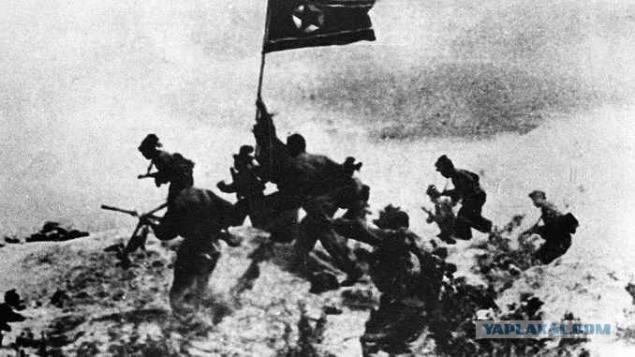
June 25, 1950 the army of the DPRK (numbering about 130 thousand. People, 258 tanks) started an offensive south
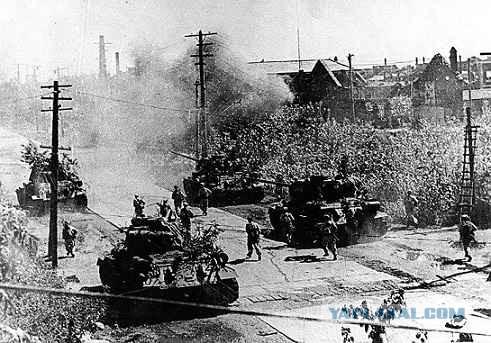
June 28 was taken in Seoul, South Korean troops (100 thousand. People) retreated Photo: American amphibious ships in the port of Incheon
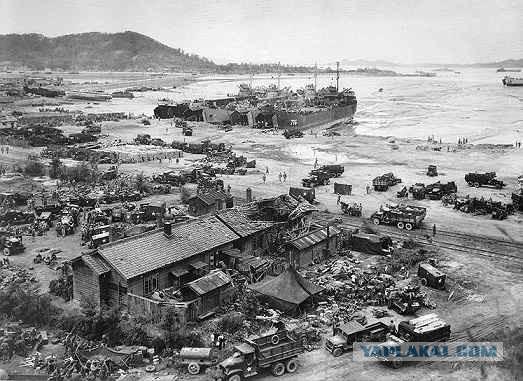
From the South in the war took part in South Korea, the US, UK and several other countries as part of a UN peacekeeping force. In the northern part of the coalition included North Korea, China (unofficially - as compounds "of the Chinese People's Volunteers") and the USSR (through informal funding and military experts)
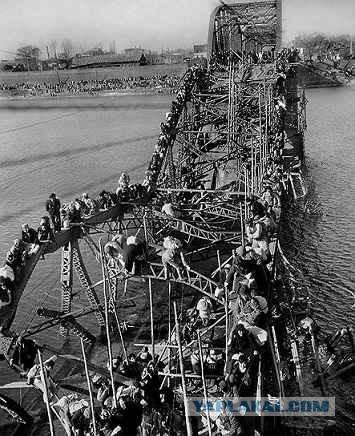
Often the conflict of the Cold War is seen as a proxy war between the United States and its allies c forces of China and the Soviet Union Photo: Army soldiers North Korea
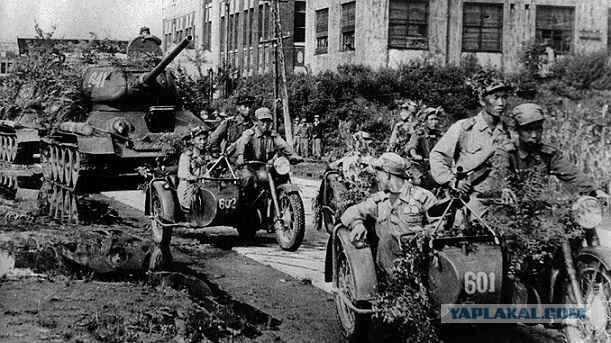
By the beginning of the war in the armed forces of the DPRK were 148 Soviet military advisers (hereinafter referred to their number ranged from 130 to 240). Another 4,300 military personnel engaged in support of combat operations. To thousands of Soviet military advisers were in China (of the war attended to 40 thousand. Soviet troops).
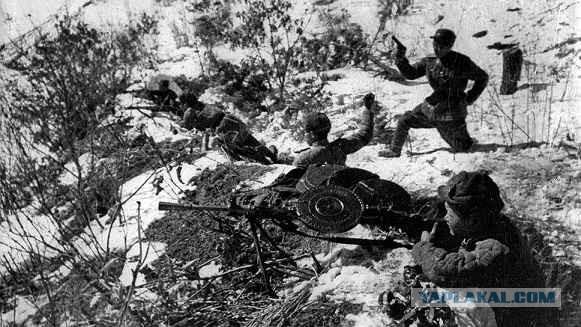
June 25-30, at the extraordinary session of the UN Security Council North Korea was declared the aggressor. By August, she won 90% of the country Photo: North Korean fighters
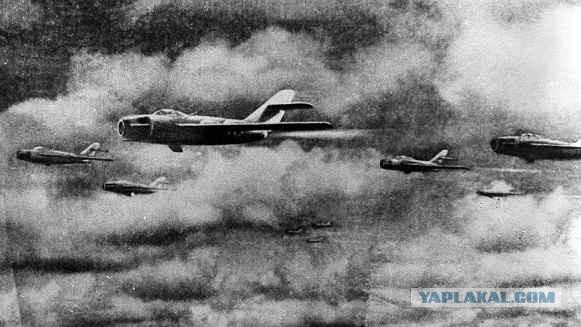
In the autumn of the UN force under the command of General Douglas MacArthur was able to seize the initiative and landed 15 September 1950 marines in the rear of the DPRK, Seoul release
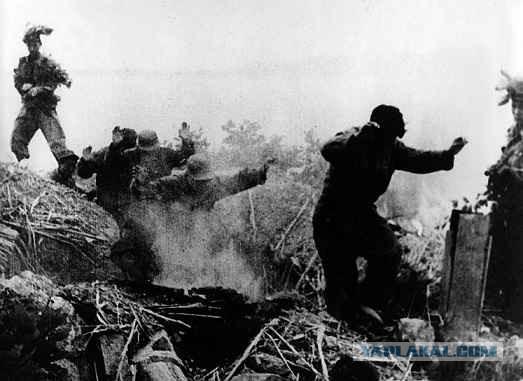
The commander of the UN General Douglas MacArthur
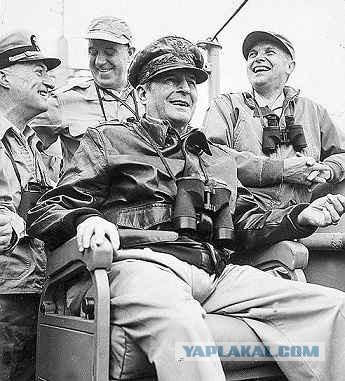
In October, the US and its allies continued to move north, capturing Pyongyang and coming to the border with China. In late October, the war troops entered China (numbering up to 1 million people), who have put aside part of the UN
ago
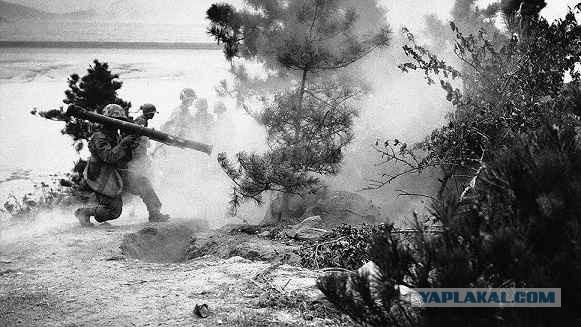
October 8, 1950 two fighter-bomber F-80 assault inflicted blow to the airfield Dry River Air Force Pacific Fleet, located a few dozen kilometers from Vladivostok
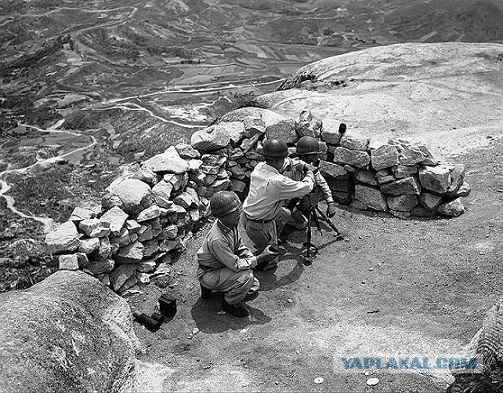
In connection with the advancement of American troops to the north of the Soviet leadership in November, it was decided to form in Northeast China 64th Fighter Aviation Corps (commanded by Major-General Ivan). At that time, it was composed of 209 aircraft, which were based on airbases Mukden, Anshan, Antung, Myaogou and Tapu. All divisions were considered elite and were part of the aviation of the Moscow Military District, commanded by Vasily Stalin
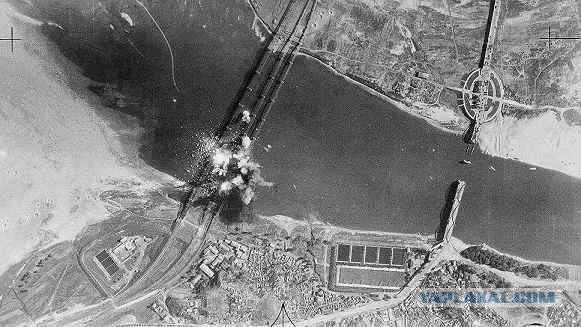
The composition of the body and the number of aircraft were not permanent. Changing units and usually occurs after 8-14 months of their stay in the war zone. In total, the body visited 12 Fighter Air Division (commanded by one of them three times Hero of the Soviet Union Colonel Ivan Kozhedub). The total number of personnel of the body was 26 thousand. Man. In service initially were MiG-15, Yak-11 and La-9, in the future they were replaced by MiG-15bis
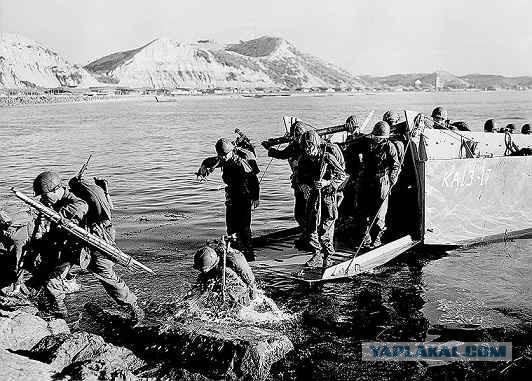
The number of combat aircraft and US allies in the region was more than 200 bombers (including 100 B-29 Superfortress), up to 600 fighters, 800 naval aircraft of different types - all 1,650 aircraft. UN aircraft was based on the Korean peninsula, the Japanese archipelago, as well as seven aircraft carriers

During 1951 the troops of the DPRK and China twice captured Seoul and retreated. By the end of 1951 the front line stabilized at the 38th parallel
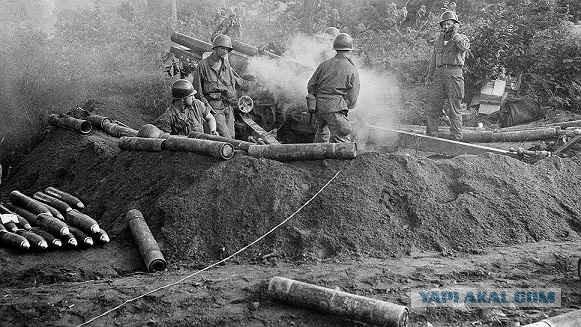
All this time there were active steps assault and bomber aircraft the US Air Force, which incapacitates communication and industrial centers of the DPRK, causing significant damage
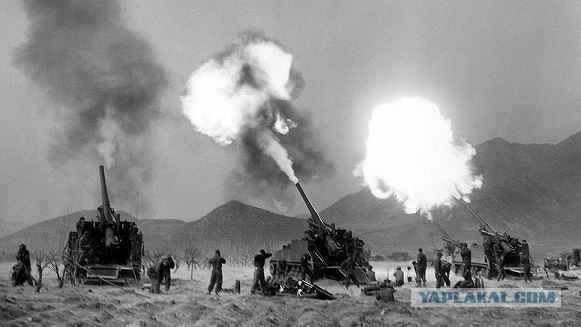
During the war, according to various estimates, the number of dead from the UN force was 40 thousand. Man from South Korea - 137 thousand. Man from North Korea - 112 thousand. Man from China - 60 thousand. Man from USSR - 262
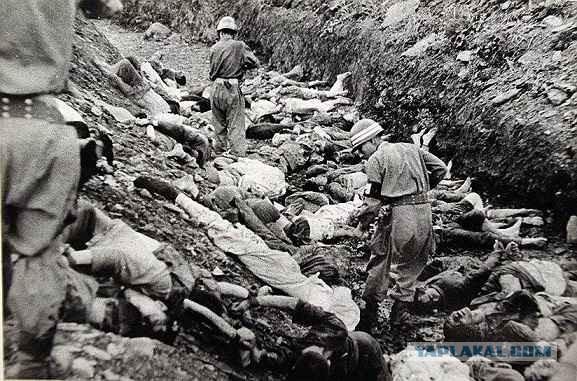
In 1952, at the front there was a lull, but the Air Force of the United Nations subjected to intense bombing North Korea, almost completely destroying the country's industry
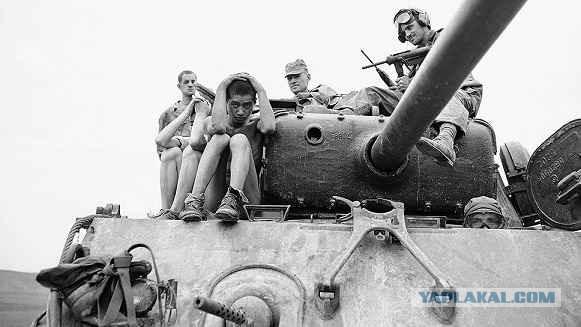
Simultaneously conducted naval blockade DPRK
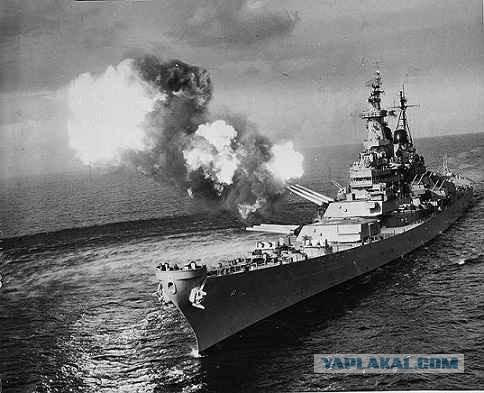
The US military has searched women suspected of complicity in the army of the DPRK. There were cases when women were forced civilians to ship weapons and ammunition for the soldiers of the North Korean army

In the second half of 1952 the Soviet Union began to transfer troops to the Far East; part Dalva cited in full combat readiness. In the event of a war with the US 12 Airborne Division had to cross the border States and 16 days to reach the line Salt Lake City -Chikago Photo: body civilians in South Korea. Busy alignment of forces on the front, government officials were not engaged in counting civilian casualties
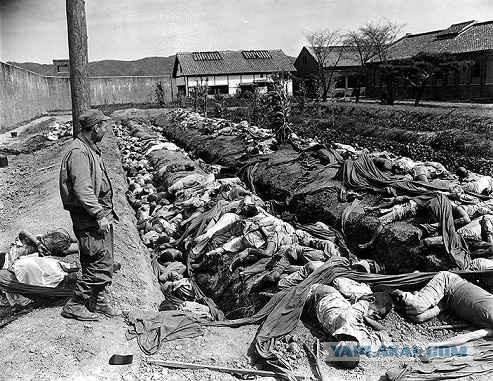
7th Fleet of the US Navy and strategic aircraft preparing to attack the USSR (including nuclear)
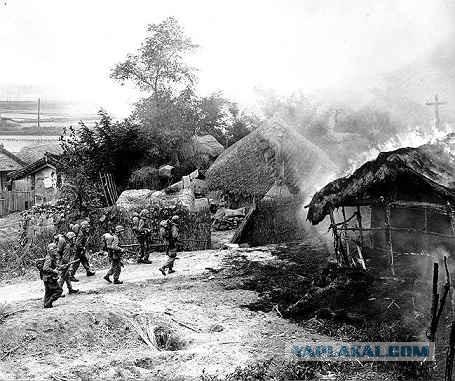
By the end of 1952, the tension in the relations between the USSR and the USA several bedrooms, troops were withdrawn from the border

In 1952, commenting on the US military presence in the Korean War, US President Harry Truman said, "We are fighting in Korea so that we do not have to fight in Wichita, Chicago, New Orleans or San Francisco Bay»
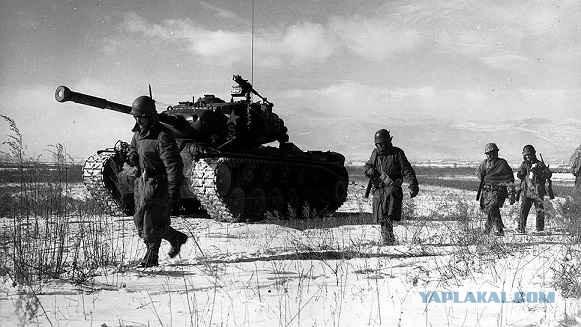
In military history especially studied mass clashes Soviet MiG-15 to B-29 at the end of October 1951. October 30, 1951 in an air battle was shot down 12 B-29 bombers and four F-84 fighter
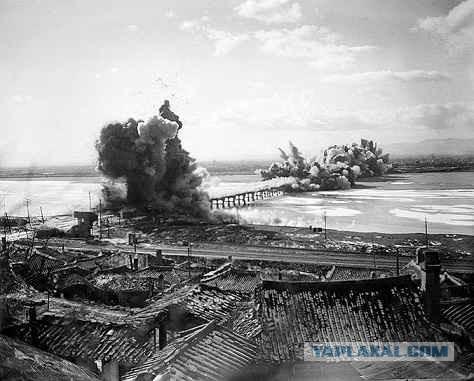
The Korean War was the first armed conflict of the Cold War and created a model of a local war when the two superpowers are fighting over a limited area without the use of nuclear weapons
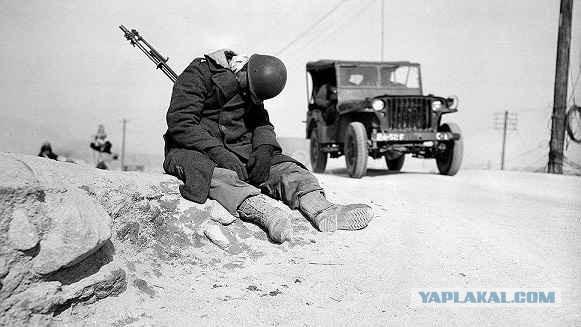
The Korean War was marked by serious human rights violations on both sides: the North Korean and South Korean forces often resorted to torture and executions of prisoners of war, killed the wounded enemy soldiers and armies of the North carried out mass executions of civilians trapped in villages

As a result, the Korean War was destroyed by more than 80% of the industrial and transport infrastructure of both countries, three-quarters of government agencies, about half of the total housing stock
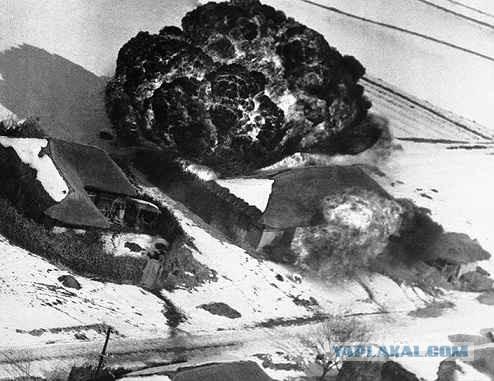
Unleashing the Korean War convinced Western leaders that communist regimes represent a serious threat to them. US tried to convince them (including Germany) the need to strengthen the defense and succeeded in this
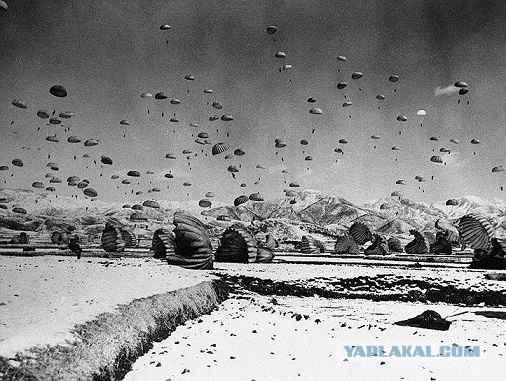
The Korean War brought the Cold War, while more binds to the confrontation between the Soviet Union and certain countries in Europe, in a new, more acute phase of confrontation
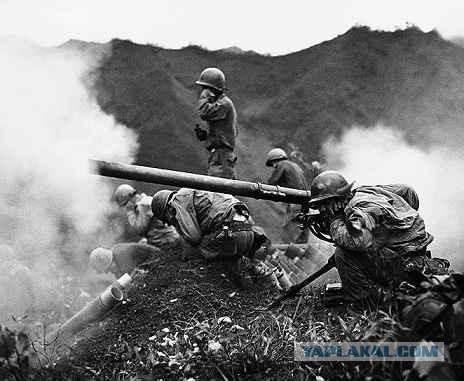
In early 1953 it became clear that to achieve victory by bombing North Korea is impossible, and all land offensive on both sides were unsuccessful

Before World War II, Korea was a colony of Japan. After 1945, the Korean peninsula formed two states, the boundary between them took place on the 38th parallel (the line of demarcation, which met in 1945, Soviet and American troops)

June 25, 1950 the army of the DPRK (numbering about 130 thousand. People, 258 tanks) started an offensive south

June 28 was taken in Seoul, South Korean troops (100 thousand. People) retreated Photo: American amphibious ships in the port of Incheon

From the South in the war took part in South Korea, the US, UK and several other countries as part of a UN peacekeeping force. In the northern part of the coalition included North Korea, China (unofficially - as compounds "of the Chinese People's Volunteers") and the USSR (through informal funding and military experts)

Often the conflict of the Cold War is seen as a proxy war between the United States and its allies c forces of China and the Soviet Union Photo: Army soldiers North Korea

By the beginning of the war in the armed forces of the DPRK were 148 Soviet military advisers (hereinafter referred to their number ranged from 130 to 240). Another 4,300 military personnel engaged in support of combat operations. To thousands of Soviet military advisers were in China (of the war attended to 40 thousand. Soviet troops).

June 25-30, at the extraordinary session of the UN Security Council North Korea was declared the aggressor. By August, she won 90% of the country Photo: North Korean fighters

In the autumn of the UN force under the command of General Douglas MacArthur was able to seize the initiative and landed 15 September 1950 marines in the rear of the DPRK, Seoul release

The commander of the UN General Douglas MacArthur

In October, the US and its allies continued to move north, capturing Pyongyang and coming to the border with China. In late October, the war troops entered China (numbering up to 1 million people), who have put aside part of the UN
ago

October 8, 1950 two fighter-bomber F-80 assault inflicted blow to the airfield Dry River Air Force Pacific Fleet, located a few dozen kilometers from Vladivostok

In connection with the advancement of American troops to the north of the Soviet leadership in November, it was decided to form in Northeast China 64th Fighter Aviation Corps (commanded by Major-General Ivan). At that time, it was composed of 209 aircraft, which were based on airbases Mukden, Anshan, Antung, Myaogou and Tapu. All divisions were considered elite and were part of the aviation of the Moscow Military District, commanded by Vasily Stalin

The composition of the body and the number of aircraft were not permanent. Changing units and usually occurs after 8-14 months of their stay in the war zone. In total, the body visited 12 Fighter Air Division (commanded by one of them three times Hero of the Soviet Union Colonel Ivan Kozhedub). The total number of personnel of the body was 26 thousand. Man. In service initially were MiG-15, Yak-11 and La-9, in the future they were replaced by MiG-15bis

The number of combat aircraft and US allies in the region was more than 200 bombers (including 100 B-29 Superfortress), up to 600 fighters, 800 naval aircraft of different types - all 1,650 aircraft. UN aircraft was based on the Korean peninsula, the Japanese archipelago, as well as seven aircraft carriers

During 1951 the troops of the DPRK and China twice captured Seoul and retreated. By the end of 1951 the front line stabilized at the 38th parallel

All this time there were active steps assault and bomber aircraft the US Air Force, which incapacitates communication and industrial centers of the DPRK, causing significant damage

During the war, according to various estimates, the number of dead from the UN force was 40 thousand. Man from South Korea - 137 thousand. Man from North Korea - 112 thousand. Man from China - 60 thousand. Man from USSR - 262

In 1952, at the front there was a lull, but the Air Force of the United Nations subjected to intense bombing North Korea, almost completely destroying the country's industry

Simultaneously conducted naval blockade DPRK

The US military has searched women suspected of complicity in the army of the DPRK. There were cases when women were forced civilians to ship weapons and ammunition for the soldiers of the North Korean army

In the second half of 1952 the Soviet Union began to transfer troops to the Far East; part Dalva cited in full combat readiness. In the event of a war with the US 12 Airborne Division had to cross the border States and 16 days to reach the line Salt Lake City -Chikago Photo: body civilians in South Korea. Busy alignment of forces on the front, government officials were not engaged in counting civilian casualties

7th Fleet of the US Navy and strategic aircraft preparing to attack the USSR (including nuclear)

By the end of 1952, the tension in the relations between the USSR and the USA several bedrooms, troops were withdrawn from the border

In 1952, commenting on the US military presence in the Korean War, US President Harry Truman said, "We are fighting in Korea so that we do not have to fight in Wichita, Chicago, New Orleans or San Francisco Bay»

In military history especially studied mass clashes Soviet MiG-15 to B-29 at the end of October 1951. October 30, 1951 in an air battle was shot down 12 B-29 bombers and four F-84 fighter

The Korean War was the first armed conflict of the Cold War and created a model of a local war when the two superpowers are fighting over a limited area without the use of nuclear weapons

The Korean War was marked by serious human rights violations on both sides: the North Korean and South Korean forces often resorted to torture and executions of prisoners of war, killed the wounded enemy soldiers and armies of the North carried out mass executions of civilians trapped in villages

As a result, the Korean War was destroyed by more than 80% of the industrial and transport infrastructure of both countries, three-quarters of government agencies, about half of the total housing stock

Unleashing the Korean War convinced Western leaders that communist regimes represent a serious threat to them. US tried to convince them (including Germany) the need to strengthen the defense and succeeded in this

The Korean War brought the Cold War, while more binds to the confrontation between the Soviet Union and certain countries in Europe, in a new, more acute phase of confrontation

In early 1953 it became clear that to achieve victory by bombing North Korea is impossible, and all land offensive on both sides were unsuccessful
























